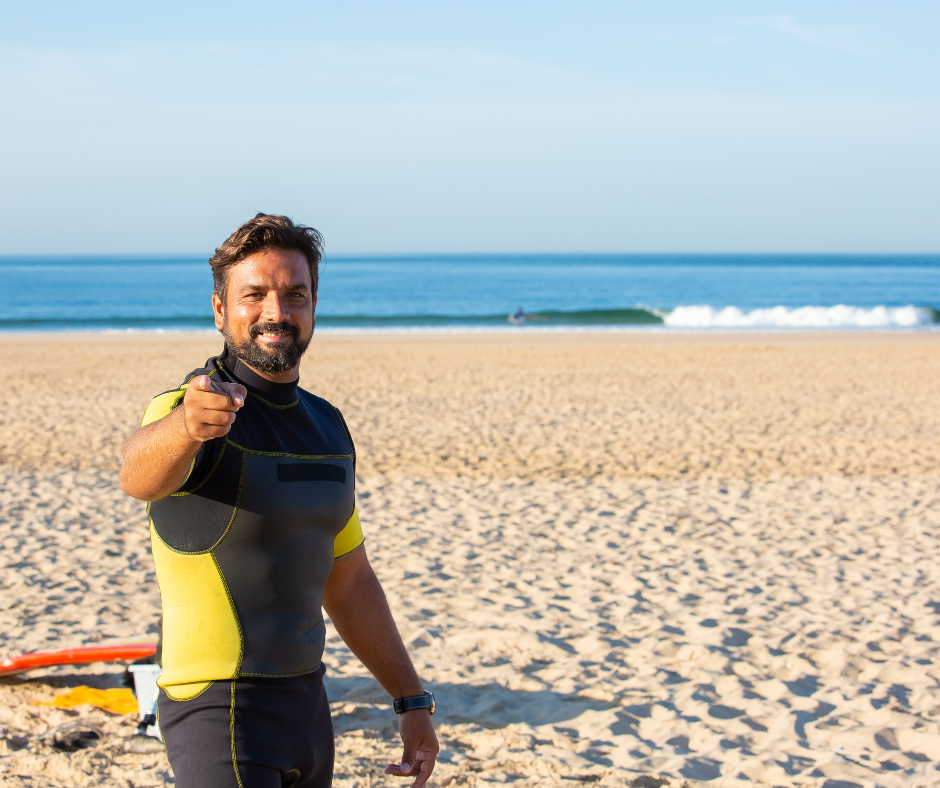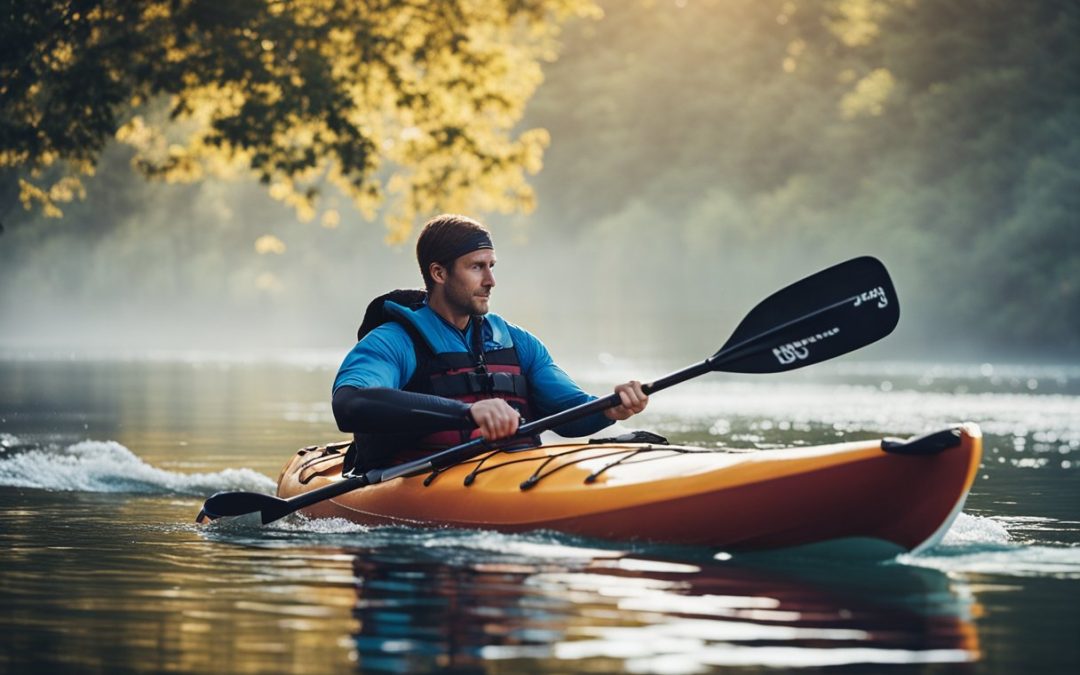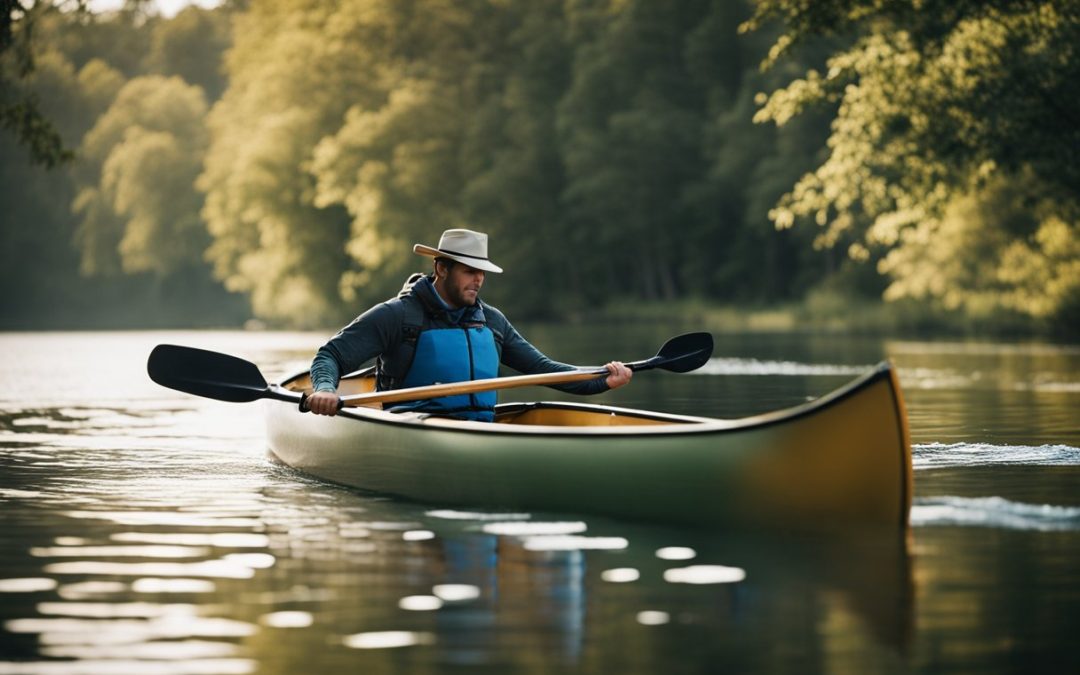Selecting the perfect wetsuit can be a daunting task. With so many options and features, it might take time to determine which wetsuit is best suited for one’s needs. This buyer’s guide will simplify decision-making by discussing essential factors to consider when purchasing.
Wetsuits not only provide warmth and insulation in cold water, but they also offer protection from UV rays and marine life. Whether an individual is a seasoned water sports enthusiast or a beginner looking to dip their toes in the water, finding the appropriate wetsuit can enhance the overall experience.
Apart from considering factors such as water temperature and intended use, paying attention to materials, thickness, and fit is vital to ensure maximum performance and comfort. By keeping these aspects in mind, anyone will soon be able to identify the most suitable wetsuit for their needs and enjoy water-based activities with confidence and ease.
Understanding Wetsuits
Types of Wetsuits
Depending on the water activity and conditions, there are various types of wetsuits to choose from. Here are some common types:
- Shorty: A shorty wetsuit covers the torso, upper arms, and legs. It is ideal for warmer water conditions and offers more flexibility for activities like surfing and snorkeling.
- Full Suit: This wetsuit covers the entire body, including arms and legs. It is suitable for colder water temperatures and provides more thermal protection.
- Spring Suit: Combining aspects of a shorty and full suit, a spring suit has full-length legs and short sleeves. It offers a balance of coverage and flexibility for water temperatures that are not too warm or cold.
- Farmer John/Jane: These sleeveless wetsuits cover the torso and legs but leave the arms exposed, providing warmth to the lower body and allowing unrestricted upper-body movement.
Material and Thickness

Wetsuit thickness is indicated by a series of numbers, such as 2/2mm or 4/3mm. The first number refers to the thickness (in millimeters) of the torso material, and the second is the thickness of the material used for the arms and legs.
Thickness & Temperature Guide for Wetsuits

Remember that individual temperature preferences and tolerances may vary, so selecting a wetsuit that suits your needs is essential.
Choosing the Right Wetsuit
Finding the Correct Fit
When selecting a wetsuit, the priority should be finding the correct fit. A wetsuit should fit snugly but not too tight, allowing a full range of motion. It is essential to try on different sizes and styles from various brands, as sizing can vary. A well-fitted wetsuit ensures efficiency, warmth, and comfort.
Essential measurements to consider when looking for the perfect fit are:
- Height: Match your measurement to the size chart provided by the manufacturer.
- Chest: Measure around the fullest part of your chest.
- Waist: Measure around the narrowest part of your waist.
- Hips: Measure around the fullest part of your hips.
Considering the Wetsuit Zipper Style
There are three main zipper styles for wetsuits: back zip, chest zip, and zipperless. Each type has its advantages and disadvantages:
- Back zips: The most common style allows easy entry and exit. However, flexibility and water sealing may be slightly compromised.
- Chest Zip: Provides better flexibility and a more secure seal, as the zipper is located at the front, reducing the chance of water entry. It may be more challenging to get in and out of the wetsuit.
- Zipperless: Maximizes flexibility and offers an even tighter seal but can be more challenging to put on and remove.
When choosing a wetsuit zipper style, consider your preferences and the specific water activity you will participate in.
Picking the Wetsuit Based on Activity
Different wetsuits are designed for specific water activities and temperatures. To choose the best one, consider the following factors:
- Water Temperature: Wetsuit thickness is measured in millimeters – thicker wetsuits provide more insulation for cold water conditions. Consistency may be listed as a single value (e.g., 3mm) or two values (e.g., 3/2mm), with the former representing the body and the latter the limbs.
- Activity: High-stretch materials in a wetsuit provide additional flexibility, essential for surfing or swimming activities. A wetsuit with moderate flexibility is sufficient for activities requiring less movement, such as diving.
- Wetsuit Type: There are various wetsuit types available, such as full suits, spring suits, and shorties. Total cases cover the entire body and are ideal for colder waters. Spring suits combine short sleeves and short legs for warmer conditions, and shorties are beneficial for mild water temperatures.
Remember these factors to find the perfect wetsuit for your specific needs.
Wetsuit Care and Maintenance

Proper wetsuit care and maintenance can significantly extend its lifespan and keep it functioning optimally. To maintain a wetsuit in good condition, follow these essential tips.
Rinse after use: Always rinse the wetsuit thoroughly with fresh water after each use. This will help remove salt, chlorine, and other debris that can damage the neoprene material.
Dry properly:
- After rinsing, dry the wetsuit inside out in a shaded area.
- Avoid direct sunlight, as excessive exposure to UV rays can cause the wetsuit to lose its flexibility and fade its colors.
- Make sure that the wetsuit is completely dry before storing it.
Store with care: Store the wetsuit in a cool, dry place away from direct sunlight and heat sources. Avoid folding the wetsuit, as this can cause creases and damage the material over time. Instead, hang it on a wide, padded hanger explicitly designed for wetsuits to maintain its shape.
Avoid bleach, solvents, or other harsh chemicals on the wetsuit. These can damage the neoprene and reduce its durability.
Inspect for damage: Periodically check the wetsuit for any tears or damage. Minor issues can be repaired using wetsuit glue, while most significant matters might require professional services.
A wetsuit can provide optimal performance and comfort for an extended period by following these care and maintenance tips.
Best Wetsuit Brands

O’Neill Wetsuits is a reputable brand in the wetsuit industry and has been around since the 1950s. They offer a wide range of wetsuits for all water sports, catering to different skill levels and water temperatures.
Rip Curl is another well-established wetsuit manufacturer known for their innovative designs and high-quality materials. They have a comprehensive collection of wetsuits, including their popular FlashBomb series, which focuses on warmth and flexibility.
Billabong entered the wetsuit market in the 1970s and has consistently produced top-performing wetsuits. Their wetsuits are designed with advanced materials, such as their furnace thermal lining, to ensure comfort and performance in various surfing conditions.
Patagonia offers environmentally friendly wetsuits from sustainable materials like Yulex, a natural rubber alternative to traditional neoprene. The brand is committed to reducing environmental impact while providing durable, high-performing wetsuits.
Xcel focuses on producing wetsuits specifically designed for optimal performance in colder water temperatures. Their Drylock series, for instance, uses advanced technologies and materials to provide warmth and flexibility in cold water conditions.
Quiksilver is a famous brand among professional surfers and offers a range of wetsuits for different types of water sports and skill levels. Their Highline series, for example, features cutting-edge features and innovative materials, ensuring an excellent blend of performance, comfort, and durability.
When selecting a wetsuit, it’s essential to consider the brand’s reputation and the specific features and technologies offered. These key brands have proven themselves within the industry and provide wetsuits suitable for multiple water sports, skill levels, and temperatures.
How To Remove Your Wetsuit Quickly
Removing a wetsuit quickly and efficiently can be a bit challenging, especially when you’re wet and tired after a water activity. Here’s a step-by-step guide to help you remove your wetsuit easily.
1. Find a Suitable Location:
- Look for a flat and clean area where you can remove your wetsuit comfortably. Avoid rocky or rough surfaces that could damage the wetsuit.
2. Get Help (if available):
- If possible, ask a friend or fellow water sports enthusiast to help you remove your wetsuit. Having someone assist you can make the process faster and smoother.
3. Unzip or Unfasten the Wetsuit:
- If your wetsuit has a zipper, unzip it entirely, or if it has any other fastening mechanisms, unfasten them to open the wetsuit.
4. Use the Inside-Out Method (Option 1):
- Reach inside the wetsuit from the neck opening and start peeling it off from the inside out.
- Use your hands to push the wetsuit down your arms, torso, and legs. This method is particularly effective for getting the wetsuit off your shoulders and arms quickly.
5. Use the Pull-Down Method (Option 2):
- Stand up straight and grab the wetsuit’s material at the waist or hips.
- Pull the wetsuit down over your hips and let gravity assist you in pulling it down your legs. This method works well for removing the wetsuit from your lower body.
6. Be Gentle and Avoid Force:
- While removing the wetsuit, be gentle to avoid tearing or damaging the material. Neoprene, the material used in most wetsuits, can be delicate.
7. Careful with Ankles and Feet:
- When pulling the wetsuit off your feet, do it gradually and be cautious not to catch your toes in the process.
8. Remove One Arm at a Time (if necessary):
- If you’re struggling to get the wetsuit off one arm, focus on the other arm first. Once the first arm is free, it will be easier to remove the other one.
9. Roll Down the Wetsuit:
- If you find it challenging to remove the wetsuit using the previous methods, try rolling it down from the top to the bottom gradually.
10. Use Wetsuit Lubricant (Optional):
- Some water sports enthusiasts use wetsuit lubricant or a mixture of water and baby shampoo to make the wetsuit removal process smoother.
11. Rinse and Dry the Wetsuit:
- After removing the wetsuit, rinse it with fresh water to remove any salt or sand. Hang the wetsuit up to dry in a shaded area away from direct sunlight.
You’ll become more proficient at removing your wetsuit quickly and efficiently with practice. Remember to take your time and be gentle with the material to preserve the longevity of your wetsuit.
What to look for when buying a wetsuit

When buying a wetsuit, several factors must be considered to ensure you get the best fit and performance for your needs. Here’s a list of things to look for when buying a wetsuit:
1. Thickness:
- The wetsuit’s thickness is essential and varies depending on the water temperature and the season you’ll be using it. Thicker wetsuits provide more insulation in colder water, while thinner wetsuits offer better flexibility and comfort in warmer conditions.
2. Material:
- Most wetsuits are made of neoprene, a synthetic rubber that provides insulation and buoyancy. Look for high-quality neoprene that offers good flexibility and durability.
3. Stitching and Seams:
- Check the wetsuit’s stitching and seams. Flatlock stitching is comfortable but may allow some water to seep through, which is suitable for warmer waters. Sealed or blind-stitched seams provide better water resistance and insulation, making them more appropriate for colder conditions.
4. Fit:
- A proper fit is crucial for a wetsuit’s performance. The wetsuit should be snug but not tight, with no gaps or excessive bunching. Ensure the wetsuit covers your entire body, including the wrists and ankles.
5. Mobility and Flexibility:
- Test the wetsuit’s flexibility and mobility by moving your arms, legs, and torso while trying it on. A good wetsuit should allow for a wide range of movement without feeling restrictive.
6. Entry System:
- Wetsuits come with various entry systems, such as back, front, or no zippers (pullover style). Choose an entry system that you find comfortable and easy to use.
7. Durability:
- Look for a wetsuit with reinforced knees and other high-wear areas to ensure durability and longevity.
8. Brand and Reviews:
- Opt for reputable brands known for producing high-quality wetsuits. Read reviews from other users to get insights into the wetsuit’s performance and durability.
9. Thickness Distribution:
- Some wetsuits have different thicknesses in various body parts, such as the chest, back, and limbs. Consider how the thickness distribution aligns with your paddling needs and the water conditions you’ll encounter.
10. Price and Budget:
- Set a budget for your wetsuit purchase and try to find one that fits your price range. While quality wetsuits can be an investment, finding a balance between quality and affordability is essential.
11. Try Before Buying:
- Try on the wetsuit before purchasing it to ensure it fits comfortably and suits your needs. Some stores also offer options to test wetsuits in the water to evaluate their performance.
Considering these factors, you can select a wetsuit that fits well, provides adequate insulation, and enhances your overall water sports experience. An adequately chosen wetsuit will keep you comfortable, warm, and protected while enjoying your favorite water activities.












